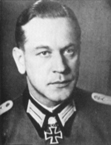Alfred
Posts: 6685
Joined: 9/28/2006
Status: offline

|
quote:
ORIGINAL: Lokasenna
Once again, Air Combat TFs do not react via the Reaction (0-6) setting. Their reaction to enemy carrier TFs is a special thing that is a 100% separate mechanism that just uses the same verb (react).
Lowpe, you should use patrol zones for your ASW. They will perform better. With Remain On Station or simply sitting in port, they are relying on the sub engaging or attempting to engage them first. By setting a patrol zone, they will be actively looking for subs.
I have bolded and underlined the accurate statement. Whilst I understand the point Lokasenna has been trying to make regarding the special rules applying to CV TFs, his earlier statements have not been quite 100% accurate both in terms of "standard" CV TF reactions and what michaelm altered.
I went into great detail regarding reactions in this thread.
http://www.matrixgames.com/forums/tm.asp?m=3981268&mpage=1&key=reaction�
In particular see my posts:
For ease of reference I quote below (from post #14) the summary on the rules regarding reaction
1. Naval reaction is only available to combat TFs. Non combat TFs such as Transport, Cargo etc have neither the option to set a reaction range nor will react towards an enemy TF. Non combat TFs however may, under certain circumstances, retreat away from the enemy.
2. Due to technical coding issues, there is no reaction towards a sub TF. An ASW TF will not react towards a detected sub TF. The ASW TF may engage in combat with a detected sub TF if it comes across it in a hex traversed during the ASW TF normal or patrol movement path but it will not deviate from it's normal or patrol movement path towards the sub TF.
3. There are 2 distinct types of naval reaction. Type (A) is based on seahex range and applies to all types of combat TF, be they surface, carrier, sub et al task forces, whilst type (B) is based on hex range and applies only to a carrier TF. It is type (B) which is meant to be explained by s.6.3.4 of the manual. Much of the confusion expressed by players over carrier TF reacting is due to the fact that both types of reaction are in play and not just s.6.3.4 of the manual.
4. The max react button on the TF screen is misunderstood. It's primary function is to toggle on/off whether a naval reaction might occur. Set the reaction button to a 0 range setting tells the code to not check for a type (A) reaction BUT remember that a CV TF also answers to a type (B) reaction where the 0 range setting can be overridden.
5. A reaction range setting >0 brings into play a type (A) reaction. It does very little otherwise per se. On 14 July 2010 JWE (aka Symon) stated:
"React just means that a TF is orientated to do something, somewhere. So 'react' means 'what to do -if' and the number is how close."
Players who find JWE's statement to be somewhat underwhelming do so because they erroneously ascribe too much value to the reaction button. Probably Don Bowen's comment of 25 March 2013 conveys the concept better
"'React' means move to attack any detected enemy nearby".
The entire subject of naval reaction was much discussed by the devs during AE development. To give a feel for the sort of issues they had to grapple with consider what does a TF with a 6 hex naval reaction range setting really mean. Does it mean reacting
only 6 hexes from the initial start position, or
6 hexes from each hex along the path, or
6 hexes from the current position of the TF (including any prior reaction)
The final decision was that it could mean any of the above. For example, what should be the outcome when a TF with a naval reaction of 6 moves detects an enemy TF 6 hexes distant, moves 6 hexes towards the enemy which in turn during the same timeframe has moved 2 hexes further away. Would a highly aggressive pursuing TF commander simply say "Fair cop guv, you got me, we'll stop the pursuit now". Accordingly it was coded so that the more aggressive the TF commander is the more likely he is to order continued reaction. Conversely, the less aggressive is the commander or the less favourable conditions present for a reaction, the sooner a reaction move is called off or not even commenced.
What all this means is that a reaction range setting of 6 does not mean that a reacting TF is restricted to a 6 hex reaction move towards the detected enemy TF. Nor does it mean that the enemy TF will never be reacted towards if it is located at 7 or more hexes distance. It is all governed by the suite of factors taken into account in determining when naval reaction occurs, and this is without taking into account the ever present random factor in the game. Range is therefore not set in concrete.
6. Unlike classical WITP, naval movement in AE is on a hex by hex basis. The naval reaction algorithm is checked every single hex travelled through. Furthermore, excluding the factors which terminate or prevent in the first place a naval reaction which are listed in point 8 below, there is no limit to the number of enemy TFs that a reacting TF can move towards or engage. Also a reacting TF can switch targets in the middle of a reaction move if a closer or better target is detected.
7. Naval reaction is not dependent on the TF's movement orders. A TF with "remain on station" orders but also given a reaction range, will react and override the remain on station order and return home after the reaction (which is why one should never give a reaction range to a remain on station TF) whereas other movement orders (eg patrol, follow, waypoints) would see the TF react and subsequently return to its previous movement orders. In all instances a naval reaction move is possible only against a detected enemy TF, the higher the DL, the more likely reaction will result.
8. The naval reaction algorithm has the following checks:
detection levels
relative strength of both reactor and reactee TF
relative speed of both reactor and reactee TF
where reaction entails moving into dangerous waters (eg shallow water, under enemy air cover), the aggressiveness rating of the TF commander
ammo and fuel levels
hex characteristics (deep water being preferred)
damage and ops points levels of ships in the TF
range to enemy TF
in the case of a CV TF, the number of operational aircraft on board
in the case of a CV TF, the number of remaining aircraft sorties
known enemy minefields
in the case of a sub TF, a naval reaction will not occur into a medium or large sized port
and the ever present Grigsby random
Each combat TF with a range reaction >0 set is checked against this criteria on every hex it travels. In the case of a CV TF, it is checked for both type (A) and type (B) naval reactions.
9. The point of type (B) and s.6.3.4 of the manual is to cover the unique combat situation which only applies to carriers. For all other types of task forces, naval combat only occurs when both friendly and enemy TF (or enemy base) are co-located on the same hex. This is not the case with carriers, whose aircraft can strike at an enemy TF or base located in a different hex. Thus type (A) naval reaction is all about bringing the two opposing masses into direct contact whereas the type (B) naval reaction is about facilitating the activation of aircraft.
10. To round off, I'll provide a pertinent example because I strongly suspect the principle it demonstrates exists in Lokasenna's situation.
TF #1 is an amphibious TF.
TF #2 is a surface combat TF. It has been given movement orders to follow TF #1 and has also been given a naval reaction range of 6.
If an enemy surface TF is detected and all the relevant boxes are ticked, TF #2 will react towards the enemy because the follow order tells it to protect TF #1 and it's own reaction range tells it to move towards the enemy anyway. Remember a reaction move overrides existing movement orders (see point 7 above).
If, however, TF #2 does not have a follow TF #1 order, then it will not react towards the enemy in order to protect TF #1 but will only react on the basis of the threat/opportunity to itself alone. Most players will not notice this situation because they usually set following TFs at a range of zero and hence any enemy TF is simultaneously a threat to both friendly TFs which are in the same hex.
It cannot be too strongly emphasised the distinction between Type A and Type B reactions. It is the nature of Type B reactions which Lokasenna is attempting to draw attention to in his various posts. Where he is theoretically incorrect is in stating Type A does not apply to CV TFs. Type A also applies to CV TFs but in practice this will be extremely rare to see because other code makes a CV TF attempt to evade surface combat. However, just as sometimes a CV TF does not evade surface combat, the same theoretical possibility exists for a Type A reaction. Leader ratings and die rolls resulting in a desire for the carriers to specifically engage in a surface combat instead of flying off air strikes (because they wold be reacting to a TF without aircraft) would need to perfectly align for a Type A carrier reaction.
The other point which has led to Loasenna's inaccuracy stems from misreading what michaelm altered. The relevant thread (in particular post #13) is:
http://www.matrixgames.com/forums/tm.asp?m=3982254&mpage=1&key=reaction�
When michaelm's states in post #13 in the above thread:
The CVTF are NOT reacting as in the normal sense of reaction to TFs
he is noting that in the saved gamefile Lokasenna had sent him, the carrier TFs were executing a Type B, not a Type A reaction. He was not saying that a carrier TF can never execute a Type A reaction. The code alteration which michaelm made to Type B reactions was that the reaction was now restricted to only one enemy CV TF. Previously the reacting rule explained in point 6 of my quote above equally applied to Type B reactions.
As to the issue of ASW reacting, which several posters have raised, in the above hyperlink I redirect readers to the links back to the devs who quite unequivocally state no reaction exists for technical reasons.
Over the years the devs, in particular JWE/Symon, consistently made the point that AE messages are only string variables. They do not necessarily accurately represent what the code has done. As I stated in the many posts in the link, an ASW TF will not deviate from its programmed path to move towards a sub TF. But they can "react" to a sub TF which is "found" to be on a hex which is on its programmed path. IOW the string variable is called up when the "combat" is going to occur in another hex from that currently occupied by the "reacting" TF.
The "remain on station" setting is also covered by me in the above link.
Alfred
|
 Printable Version
Printable Version















 New Messages
New Messages No New Messages
No New Messages Hot Topic w/ New Messages
Hot Topic w/ New Messages Hot Topic w/o New Messages
Hot Topic w/o New Messages Locked w/ New Messages
Locked w/ New Messages Locked w/o New Messages
Locked w/o New Messages Post New Thread
Post New Thread